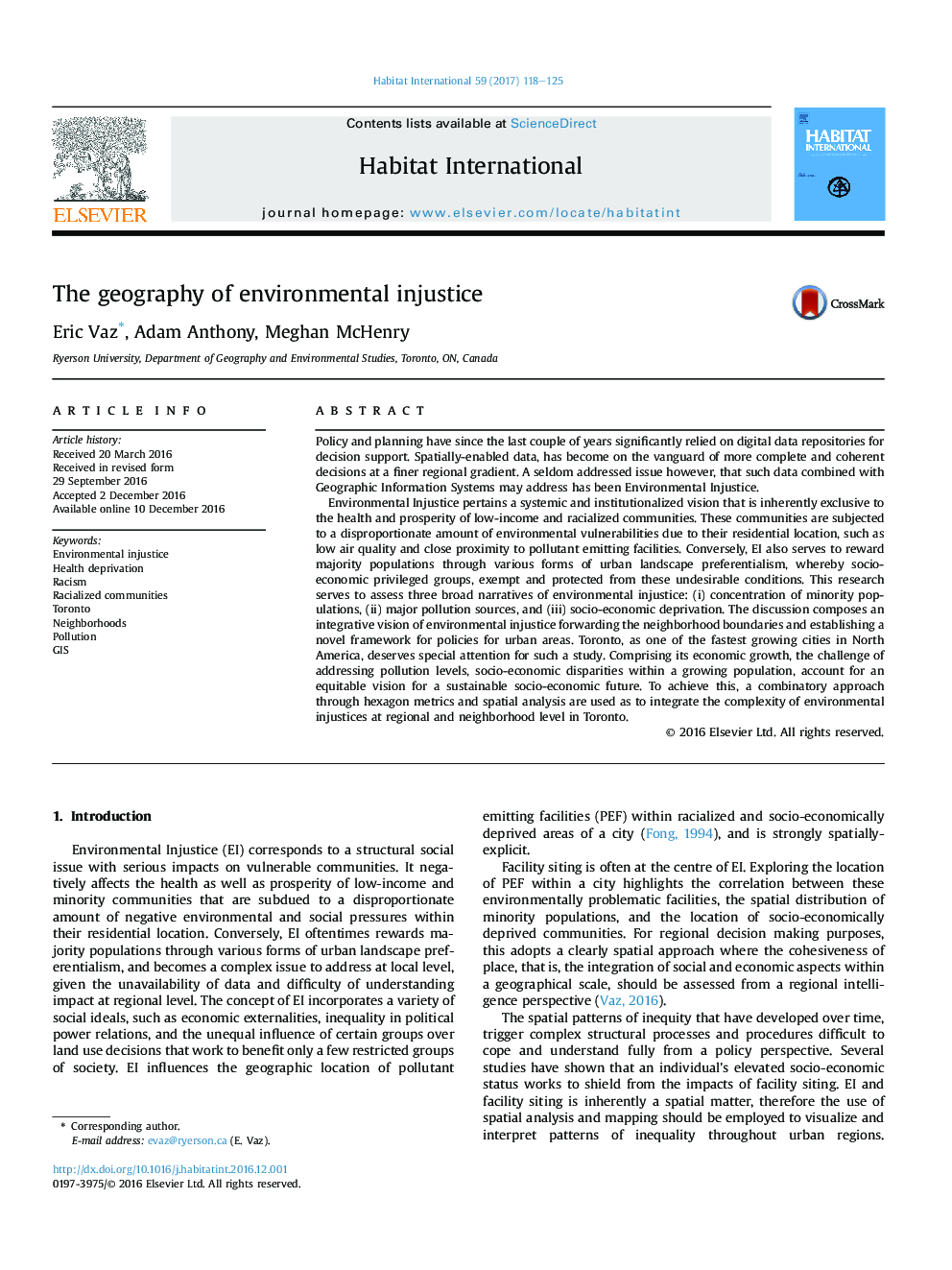| Article ID | Journal | Published Year | Pages | File Type |
|---|---|---|---|---|
| 5114705 | Habitat International | 2017 | 8 Pages |
Abstract
Environmental Injustice pertains a systemic and institutionalized vision that is inherently exclusive to the health and prosperity of low-income and racialized communities. These communities are subjected to a disproportionate amount of environmental vulnerabilities due to their residential location, such as low air quality and close proximity to pollutant emitting facilities. Conversely, EI also serves to reward majority populations through various forms of urban landscape preferentialism, whereby socio-economic privileged groups, exempt and protected from these undesirable conditions. This research serves to assess three broad narratives of environmental injustice: (i) concentration of minority populations, (ii) major pollution sources, and (iii) socio-economic deprivation. The discussion composes an integrative vision of environmental injustice forwarding the neighborhood boundaries and establishing a novel framework for policies for urban areas. Toronto, as one of the fastest growing cities in North America, deserves special attention for such a study. Comprising its economic growth, the challenge of addressing pollution levels, socio-economic disparities within a growing population, account for an equitable vision for a sustainable socio-economic future. To achieve this, a combinatory approach through hexagon metrics and spatial analysis are used as to integrate the complexity of environmental injustices at regional and neighborhood level in Toronto.
Related Topics
Social Sciences and Humanities
Social Sciences
Development
Authors
Eric Vaz, Adam Anthony, Meghan McHenry,
